What is PBO (Precision Boost Overdrive), and should you enable it? If you enable the feature on your PC, are there any notable downsides? Or benefits?
Let’s dive into it and give you some quick answers to these questions.
TABLE OF CONTENTS
What is Precision Boost Overdrive?
PBO, or Precision Boost Overdrive, refers to AMD’s intelligent boosting algorithm that works alongside its standard Precision Boost. It tweaks the limits of standard CPU boost behavior by accounting for factors like temperatures, type of workload, etc. as explained in AMD’s PBO knowledgebase article here.
This might sound a little like CPU overclocking, but PBO is actually a bit different since it doesn’t directly increase or decrease clock speed at all. Instead, it accounts for other factors to set optimal limits on boosting behavior.
PBO is also an extra setting that has to be enabled in your motherboard’s BIOS.
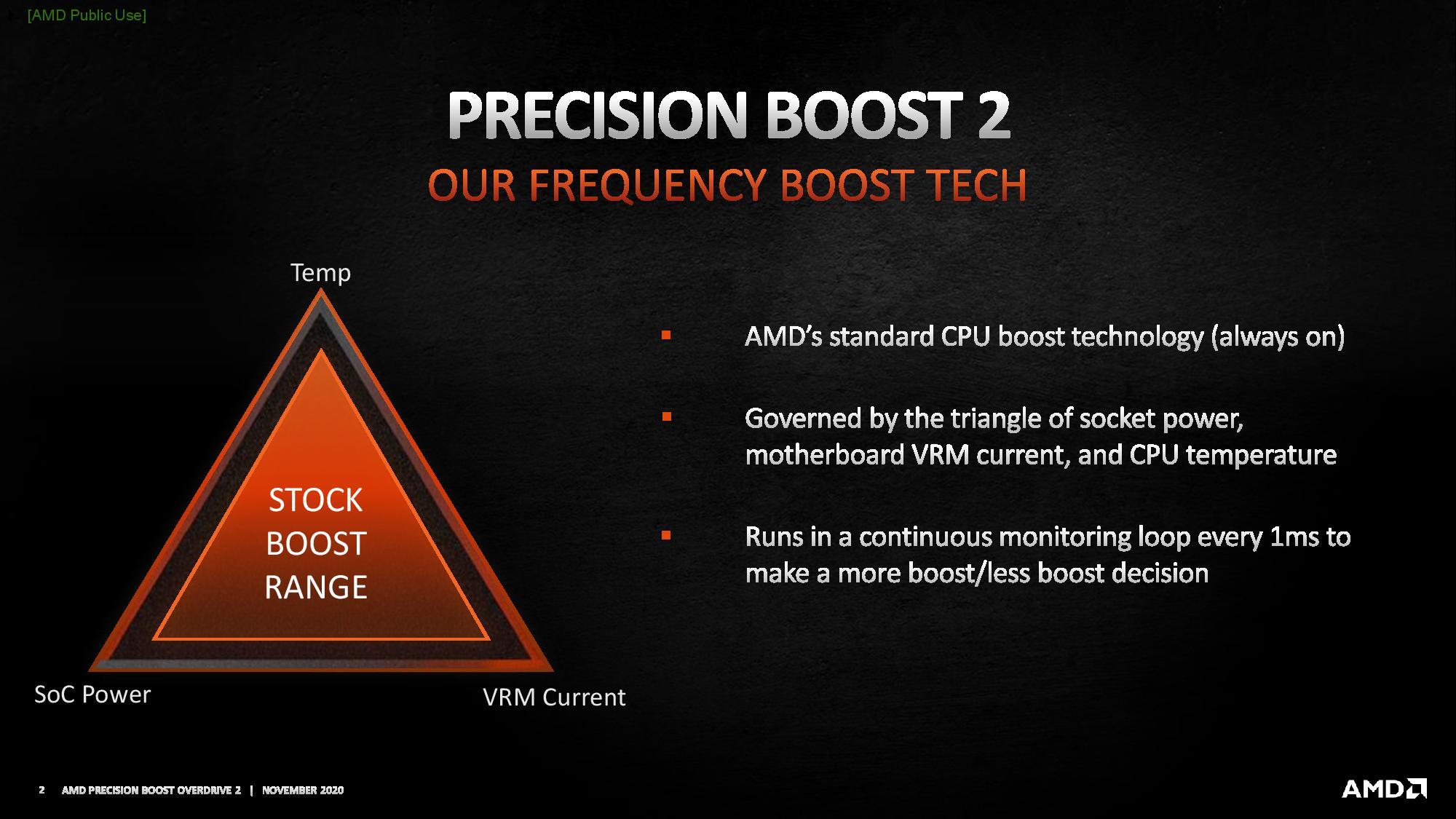
Image Credit: AMD and Tom’s Hardware
Meanwhile, the regular Precision Boost and Precision Boost 2, which actually do push CPU core clock speed, are simply enabled from the get-go. So, what’s the difference between Precision Boost and Precision Boost Overdrive?
Precision Boost is the built-in mechanism for boosting your CPU to its advertised “Boost” clock frequencies, whereas PBO is an additional setting that instead impacts the limits of Precision Boost.
Simply put, it assesses your CPU’s operating conditions and tells it how to behave when boosting to higher clock speeds.
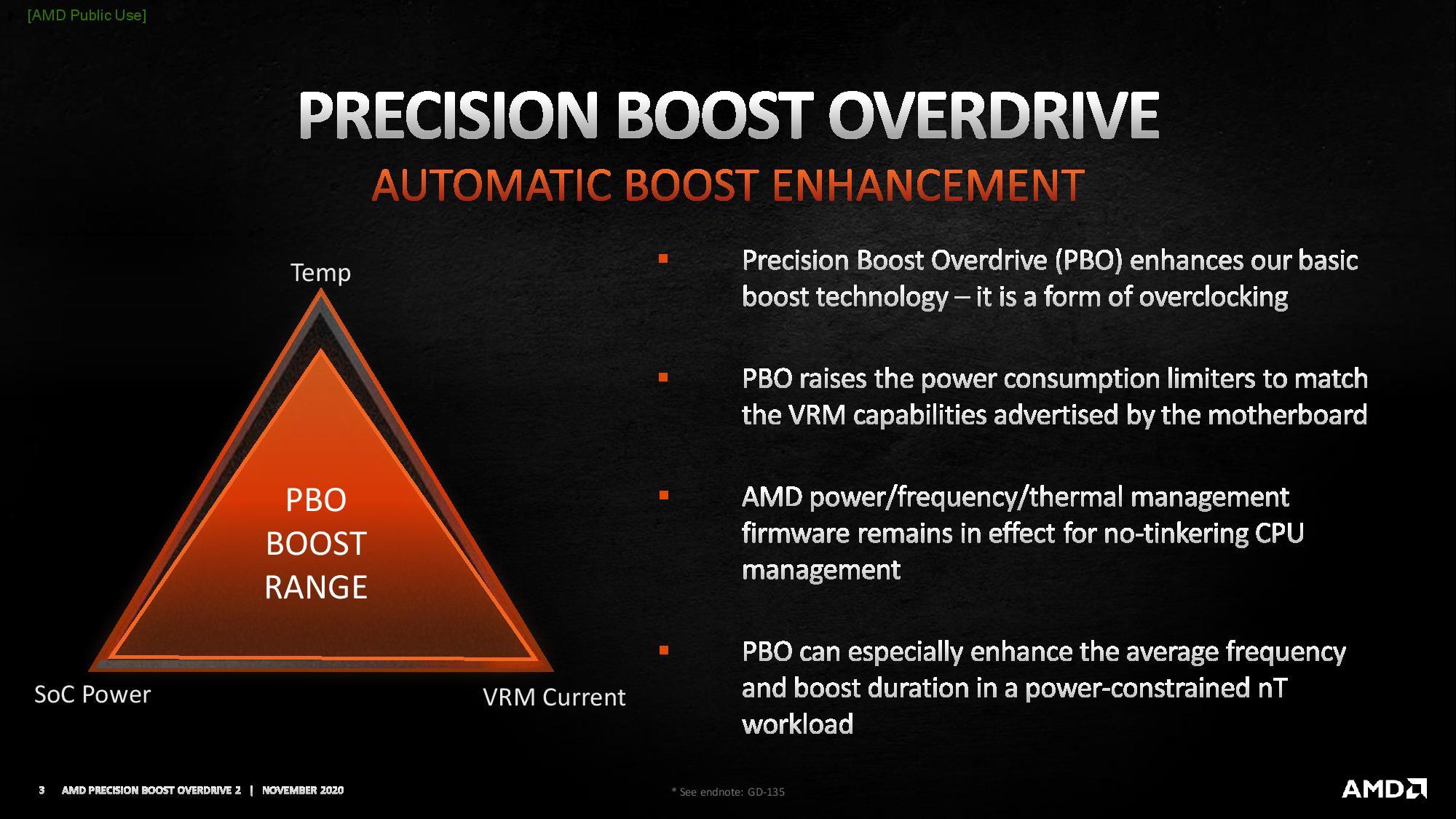
Image Credit: AMD and Tom’s Hardware
PBO does work alongside PB, but it’s worth clarifying the difference here since the two are technically different things.
Should You Enable Precision Boost Overdrive?
So, should you enable Precision Boost Overdrive?
If you want to get a small performance boost, sure! All Precision Boost Overdrive does is give your CPU a higher voltage limit that allows your base Precision Boost to do its work boosting your CPU’s boost frequencies with more headroom.
Compared to proper manual CPU overclocking, setting PBO to ‘Auto’ isn’t going to give you nearly the same performance gains. However, it can provide a small boost to performance, especially if optimized correctly and used alongside the “Auto OC” feature included alongside it in your supported Ryzen UEFI.
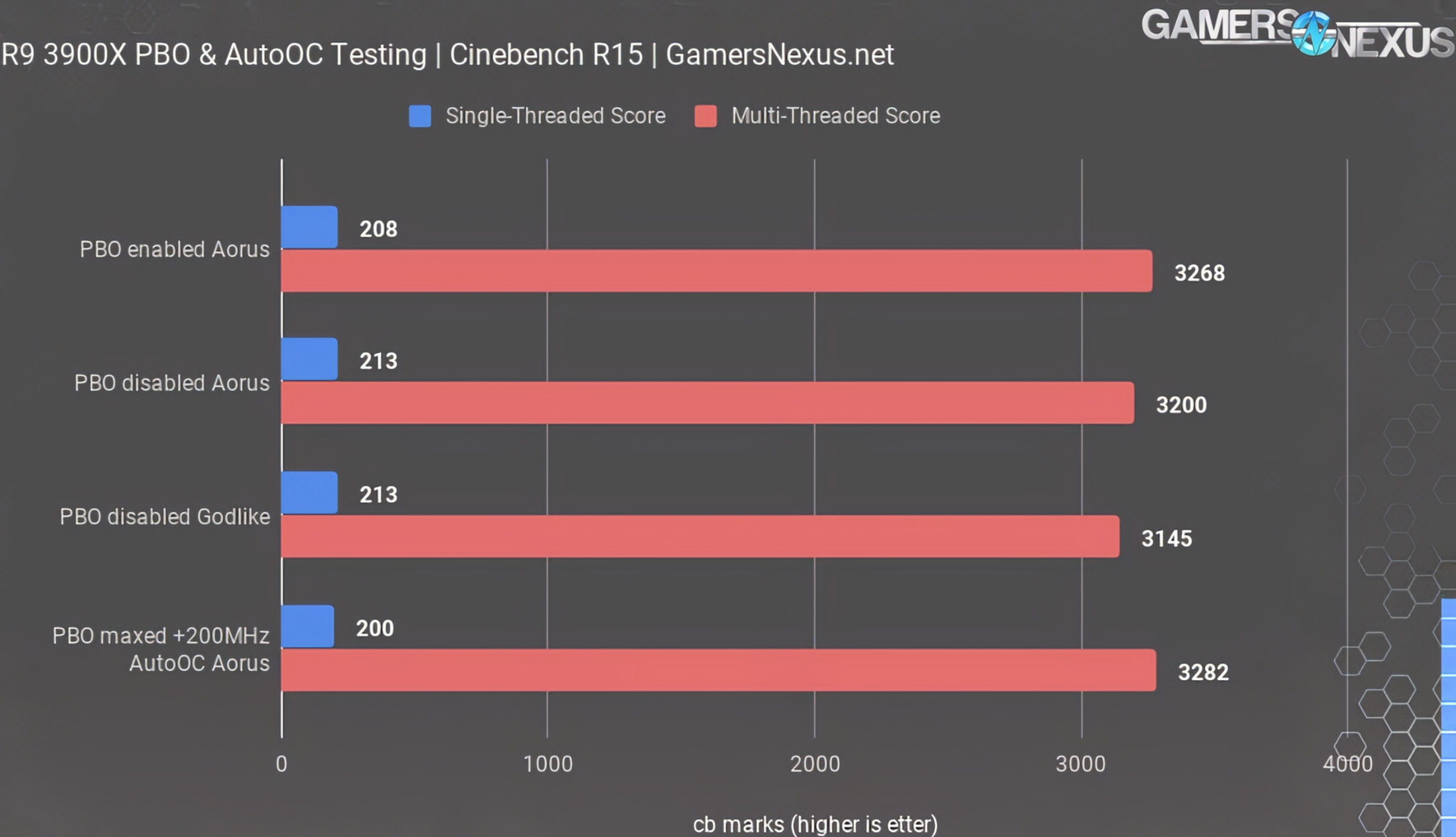
Image Source: GamersNexus
Overall, PBO serves as a fairly harmless way to squeeze a little bit of extra performance out of your CPU.
Improving your system cooling should help it push your CPU farther under load, and if you’re really dedicated, you can get down in the trenches with PBO2 and Curve Optimizer to make the most of the feature.
I’ve embedded a tutorial from Optimum Tech below for doing this on a Ryzen 5000 motherboard:
As you can see, setting an undervolt using the Precision Boost Overdrive 2 settings in your BIOS is absolutely worth it for Ryzen 5000 parts. Unless you’ve hopelessly lost the silicon lottery (rare, but can definitely happen), you should see lower temperatures, lower power draw, and higher clocks and performance.
FAQ
Does PBO Work Ryzen X3D CPUs?
Despite the Ryzen X3D CPUs otherwise strictly restricting overclocking, PBO actually does work on select Ryzen X3D CPUs. Well, Ryzen X3D CPUs from the Ryzen 7000 series, anyway.
Ryzen X3D CPUs from the Ryzen 5000 series don’t support PBO, in addition to the usual overclocking restrictions, due to their design constraints.
That said, even though the Ryzen 7 5800X3D didn’t support the feature on launch, most motherboard manufacturers have actually released BIOS updates to enable the feature, including ASUS, Gigabyte, MSI, and ASRock for their X570, B550, X470, and B450 motherboards.
Is Precision Boost Overdrive the Same as Auto Overclocking (Auto OC)?
Nope! PBO plays with power, amperage, and temperature limits, not CPU clock speed directly, and is meant to supplement built-in Precision Boost by giving it more breathing room (when available).
This is technically different from Auto OC, which is when motherboards feed more voltage into the CPU for higher clock speeds without accounting for any other factors.
AMD’s Ryzen Master Software does include an Auto OC button, though, and this feature may also be present in your BIOS alongside PBO.
Still, consensus among users is to turn off Auto OC and enable PBO to strike a balance between temperatures, power draw, and performance for Ryzen CPUs.
Is PBO Better Than Auto OC?
Not necessarily, though this isn’t a point of direct comparison since Auto OC is actually doing something else entirely.
Typically, PBO is used either with Auto OC or an undervolted CPU to increase performance.
For CPUs that don’t support Auto OC or where Auto OC is unlikely to meaningfully improve performance (ie, X3D CPUs), undervolting with Curve Optimizer alongside PBO seems to show the best results, at least according to Tom’s Hardware.
What is PBO 2?
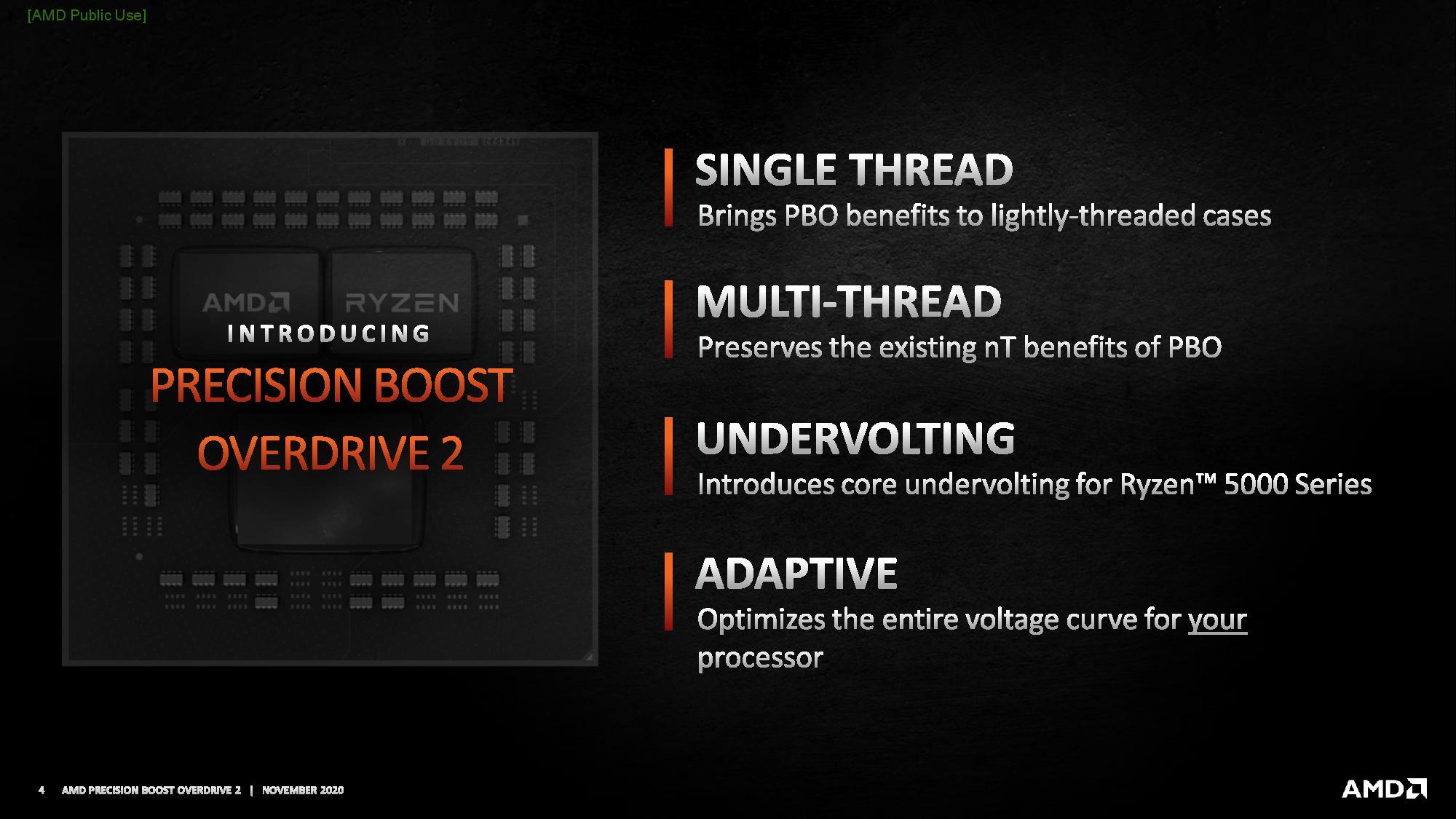
Image Credit: AMD and Tom’s Hardware
“PBO 2” refers to the updated version of Precision Boost Overdrive released starting with Ryzen 5000 CPUs that adds an additional “Curve Optimizer” setting.
Curve Optimizer is used to apply voltage offsets to AMD CPUs on a per-core or all-core basis.
Unlike the standalone PBO option, Curve Optimizer requires manual testing and configuration to find your ideal undervolt, and will require quite a few system restarts before you find the best configuration.
Over to You
And that’s it, for now!
I hope that this article helped clarify the meaning and purpose of PBO (Precision Boost Overdrive)!
If you’re an AMD CPU user with PBO available to you, PBO serves as an easy way to bump up your CPU’s performance as long as your cooling is up to snuff.
Using additional features like Curve Optimizer and Auto OC alongside PBO, depending on your specific Ryzen CPU, can turn PBO into an even more potent performance-boosting tool.
Any other questions about Precision Boost Overdrive or PC hardware? Feel free to fire off in the comments! Me or one of my fellow CGDirector Team members will be happy to help you.
You can also try our Forums with longer-form questions, share your own projects, or just engage with our Community of Experts and Enthusiasts!
Until then or until next time, happy computing! And remember: Precision Boost Overdrive is not technically an overclock, at least not by itself.
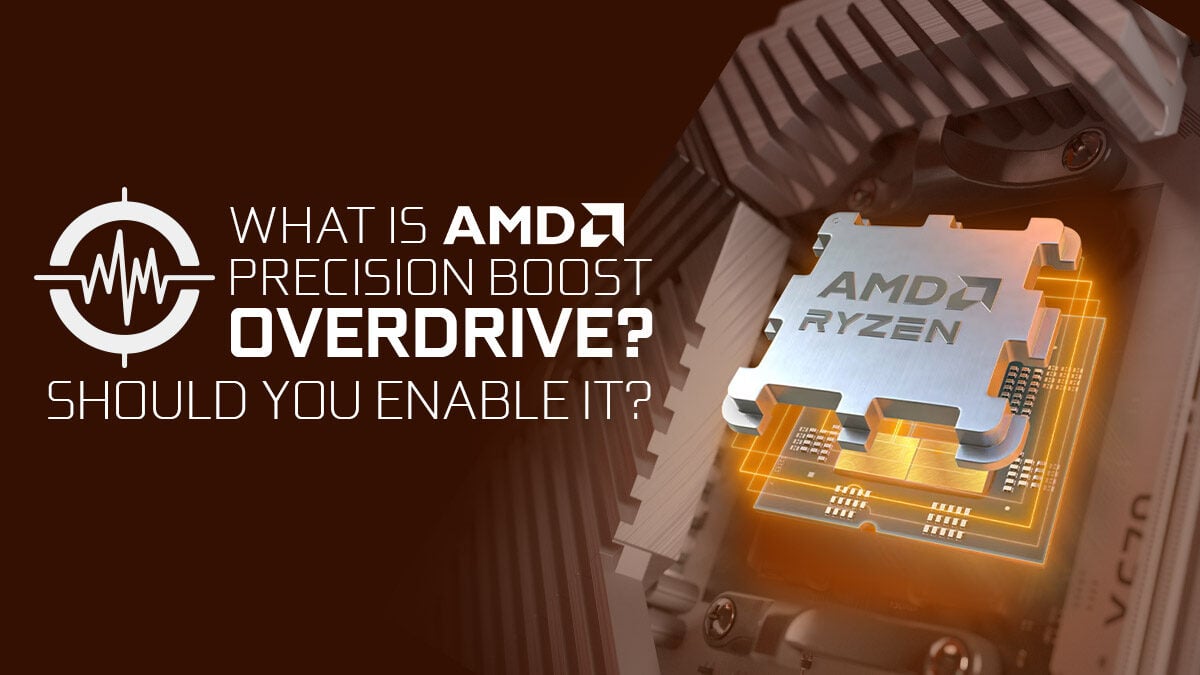
![How to Get a CPU Cooler off of a CPU [Un-stick Glued-On Cooler] How to Get a CPU Cooler off of a CPU [Un-stick Glued-On Cooler]](https://www.cgdirector.com/wp-content/uploads/media/2024/03/How-to-get-CPU-Cooler-off-CPU-Twitter-copy-594x335.jpg)
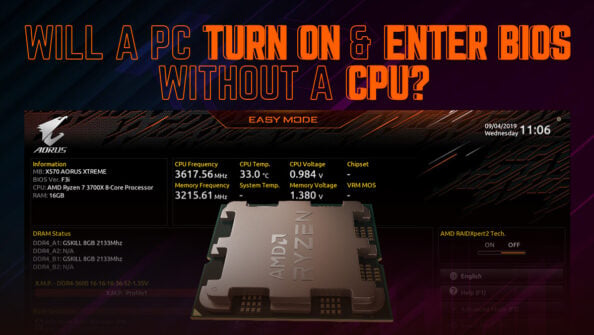
![“Best” PC Bottleneck Calculators [CPU/GPU]: Do they even work? “Best” PC Bottleneck Calculators [CPU/GPU]: Do they even work?](https://www.cgdirector.com/wp-content/uploads/media/2024/01/Best-PC-Bottleneck-Calculators-CPUGPU-Explained-Twitter-594x335.jpg)
![Best CPU for Video Encoding [2024 Update] Best CPU for Video Encoding [2024 Update]](https://www.cgdirector.com/wp-content/uploads/media/2022/02/Best-CPU-For-Video-Encoding-Twitter-594x335.jpg)

1 comment
13 February, 2024
Thank you so much!!